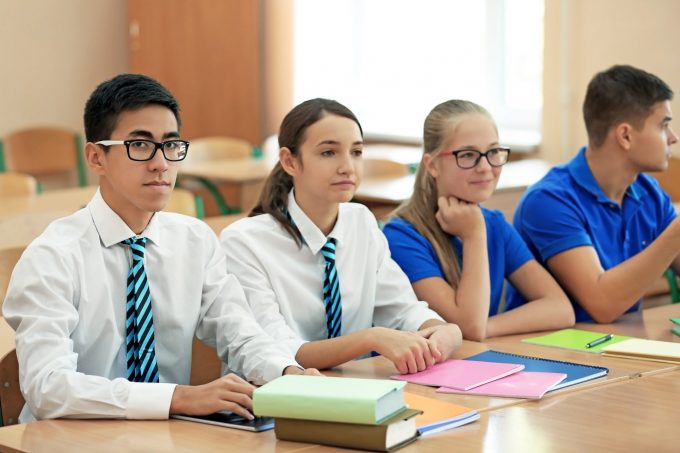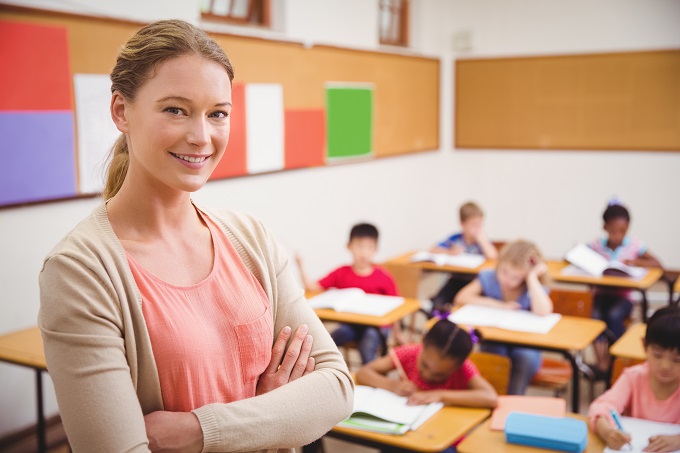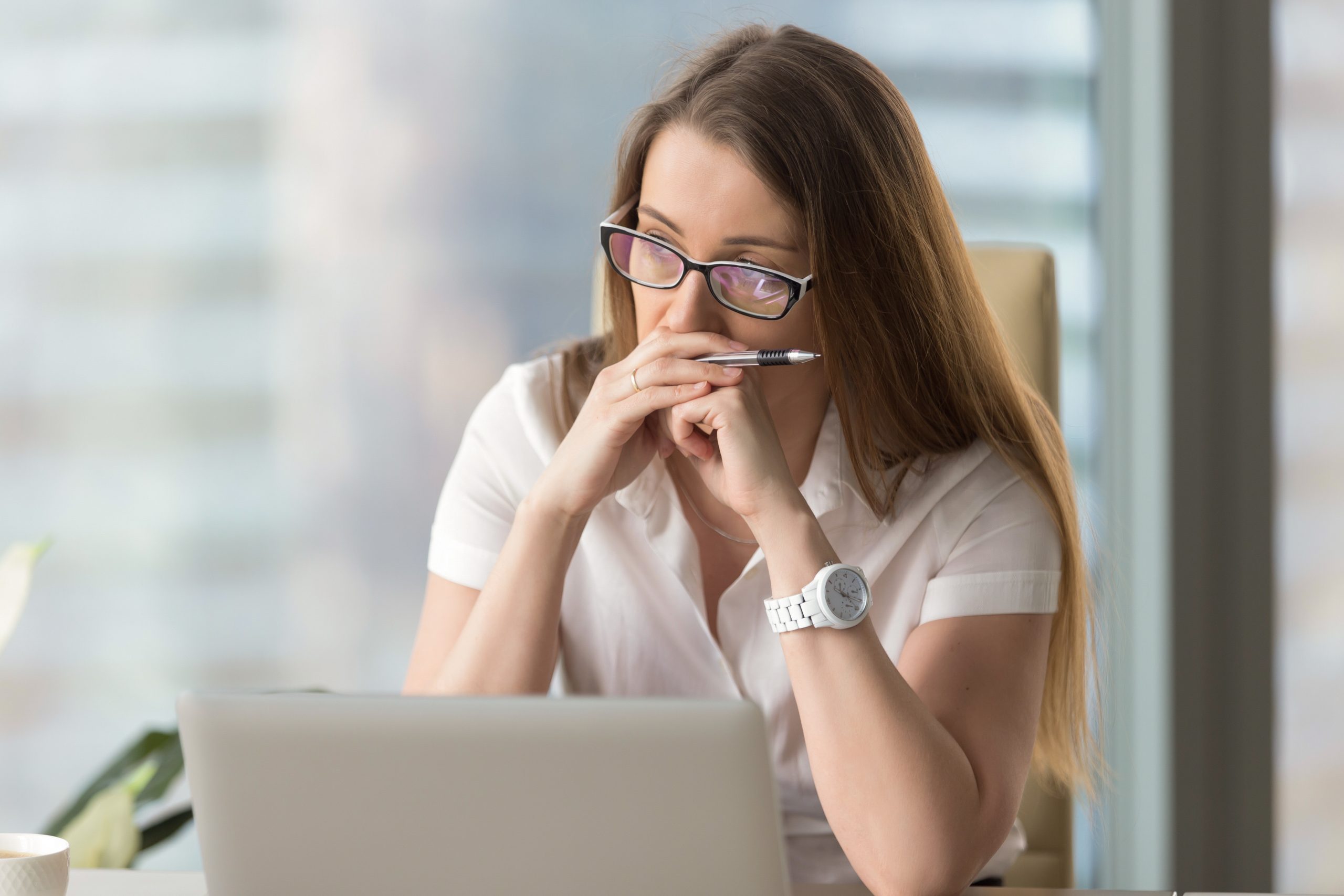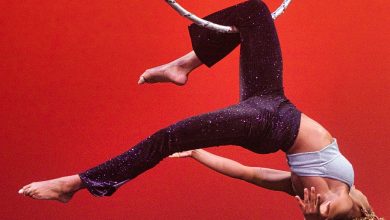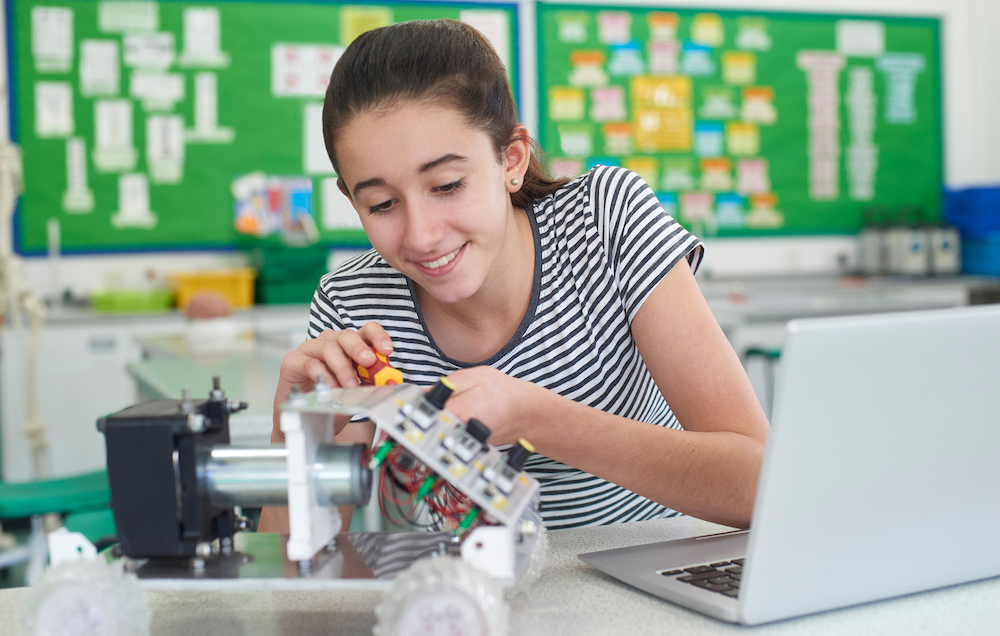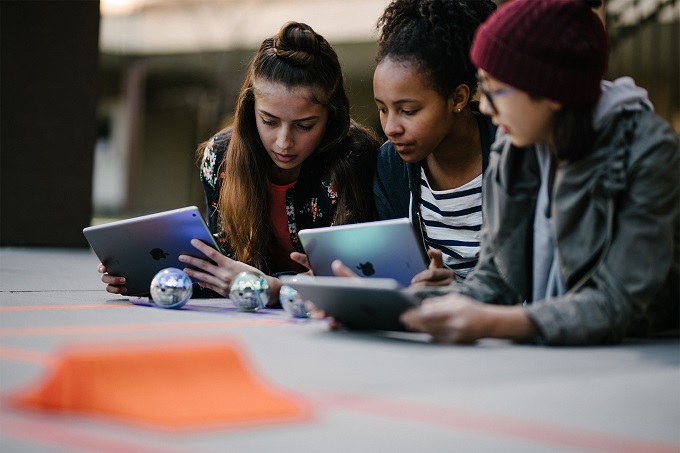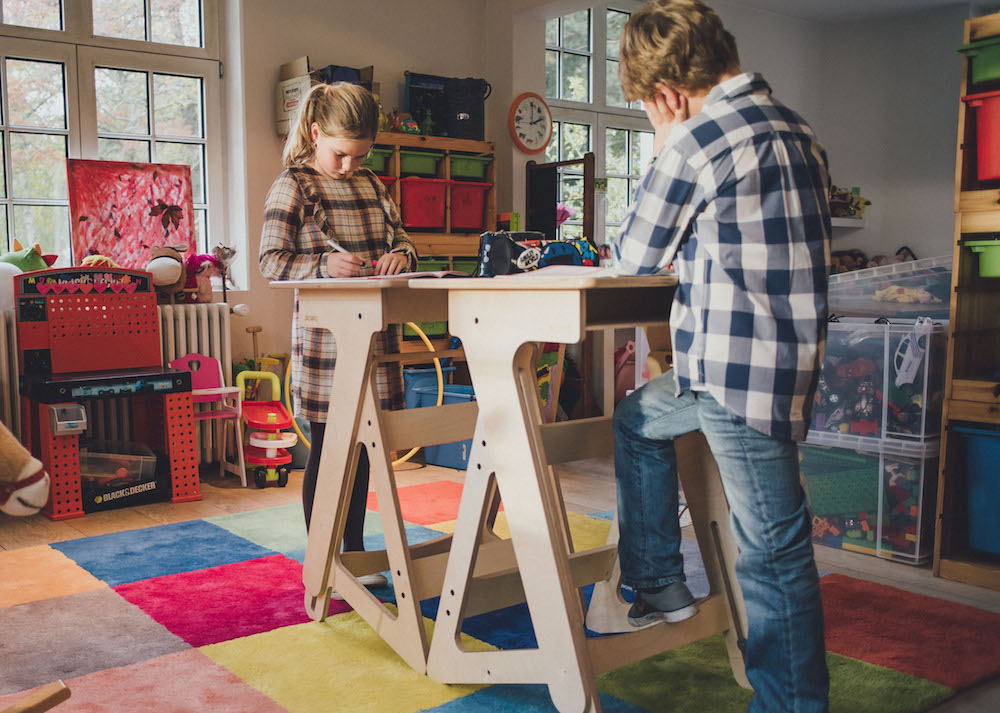
Modern learning environments, flexible learning spaces or innovative learning environments (ILE); these are not buzz terms, but topics of considerable research and movement across both Australasia and the world.
Learning and place
What does a learning place look like? In many cases, it looks as it did 70 years ago, and innovators in education are calling foul. What does a room full of desks in rows prepare students for? A 1950s-factory scene, or a typing pool. As integration of technology into pedagogy steps up, and futurists scramble for solutions to slipping outcomes, learning spaces must accommodate new modes of instruction, and (dare I say it?): ‘Move with the times’.
Picture this. In one zone, there is a small group of three students, shoes off, faces relaxed – one student who dreams of architecture is teaching the other students how to design a house in a drafting app. A bookshelf separates this cluster of beanbags from the reading nook, where soft seats with a rotating base cradle high-energy readers wearing headphones. They are listening to a classmate read a story, as they follow along with the book in their hands, spinning occasionally. Soon they will record their own reading for the next group, in one of the soft furnishing ‘quiet pods’. Two students have elevated their own desks so they can stand; it’s Friday, and sitting down feels hard today. They are deep into their creative writing, one of them repetitively taps her stockinged foot on the soft floor coverings, while the other shuffles from foot to foot. Everywhere you look, engaged students are learning.
A teacher with all the pedagogical dynamism in the world can’t create this scene without a suitable space. The world has changed, technology has made it more immediate, and all the dangers of that aside, not a single one of today’s students will enter the workforce of the previous generation. It no longer exists. If we resist, we risk preparing them for obsolescence.
Today’s workforce is one where agile employers have long since liberated their workers from the hives of cubicles, and many work from the comfort of their homes. Qualities that are valued in this evolving workplace are the ‘soft skills’, like interpersonal proficiency, critical thinking and creativity. Existing curriculum in New Zealand covers soft skills in HPE – socio-ecological perspective, and from this year forward, Australian schools will be expected to teach ‘soft skills’. These will include critical and creative thinking; empathy, intercultural awareness, and ethics. So how do we prepare the physical environment to facilitate new-world thinking and learning?
Versatility is key
In a 2009 OECD report titled, ‘Optimal Learning Spaces: Design Implications for Primary Schools’, authors Professor Peter Barrett and Dr Yufan Zhang indicated: “Well-planned pathways, open access to equipment and supplies, ease of moving furniture and creating interesting and engaging spaces are all ergonomic considerations.” They also advised that each “individual learning space should be an architecturally well-designed ‘activity pocket’ with all the furniture, equipment, storage and resources necessary for that learning activity contained within”.
Researcher Wesley Imms emphasised in Melbourne University’s Pursuit magazine that students need flexibility to occupy spaces as “private cubby holes” for independent research, or group-work spaces for collaboration. Students need places to be autonomous learners, they need spaces to comfortable interact with educational content, and as lower primary teachers will be aware, they need to move.
Let the children bounce
For some children, sitting still requires a monumental effort that could be better allocated to learning and doing. Research shows that the opportunity for movement enhances concentration, improves student wellbeing, consequently producing better learning outcomes.
In a 2003 American Journal of Occupational Therapy article titled ‘Stability Balls and Students With Attention and Hyperactivity Concerns: Implications for On-Task and In-Seat Behavior’, researchers concluded: “Such an intervention could be one effective means of improving the attention and behavior of children who are formally diagnosed with ADHD or who are perhaps exhibiting ADHD symptomatology.”
Industry views
What’s in a space?
To determine the type and style of furniture that best supports ILEs, School News accessed expert input from the industry. The consensus? Comfort, practical elements (like storage), versatility and aesthetics.
Mr Higgins of CAP Furniture, Australia urged that bright colours and a natural look such as timber will promote mental stimulation. Richard Jenkins of Woods Furniture NZ agreed, articulating that the importance of colour, light and acoustics can sometimes be underestimated. “There is a lot of research available to suggest colour has a direct effect on learning behaviours,” he said. Acoustics also play a major role: “We recommend using sound absorbing fabric on ottomans rather than vinyl for this reason.”
To stand or to sit?
A bit of both. Mark Higgins said, “furniture for an ILE should have sit-stand functionality, to encourage good posture and allow for activity”. He explained that traditional seating can result in either lethargy from inaction, or distraction due to discomfort.
“There is also research that suggests students are less territorial when standing which can therefore promote more creative discussion,” Richard Jenkins informed School News.
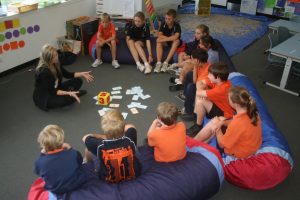
A soft place to fall
For students on the autism spectrum or with anxiety disorders, considerations might include the availability of bean bags or crash mats for deep pressure calming. Shane Tricarico, manager at KloudSac said, “the deep pressure sensory input a child receives when they sink into our foam filling helps relax students, which in turn, helps them focus and learn”. He said teachers integrating students with special needs find soft furnishings a fantastic resource to relieve anxieties that can otherwise prevent integrated learning.
Flexible furnishings with soft fillings are also becoming a feature of Open Learning Areas, and ILE- adapted classrooms. Mr Tricarico told School News that schools often select foam bags that are long in shape and suitable for use by several children at once. “We love to see them full of students collaborating with others, reading by themselves, or having some computer or iPad time.”
For versatility, schools creating ILEs “prefer products that can be used both indoors and outdoors with an option of water resistant canvas covers,” he added.
What flexibility can you bring into your classrooms?
“One space – many possibilities”
“One space – many possibilities,” noted Richard Jenkins. “Flexibility means having a choice of learning area possibilities”, and being able to convert the space with minimum fuss. “The space should be capable of ad hoc configuration.”
Mark Higgins concurred. “Our school clients require furniture solutions with flexible designs. They need them to be easy to reconfigure, to allow for different activity formats, but also for resource sharing.” “They want simple classic design, with versatility.”
Karen Hansen of New Zealand supplier Lundia has observed an influx of schools adopting ILEs in classroom spaces, as well as auxiliary locations around school. Shelving is especially important for a library, “but even in classrooms it’s become more popular to have the resource material like books and picture books on easy display fixtures to encourage children to read and study,” Ms Hansen told School News.
“Shelving island units are now better suited (with castors) to create learning spaces on demand.”
“Mobile shelving systems provide flexibility, and are easily adaptable to the changing environments essential for ILE’s,” she continued. Other popular features include “exterior panels fitted with magnetic and writable surfaces as a tidy way to finish the units off, while providing teaching aids” as well as “useable floor areas.”
Richard Jenkins has watched the ILE movement in Australia and New Zealand “mature” in its approach to the design and implementation. These days, he said, “schools first establish a vision of what teaching and learning should look like, and then apply technology and furnishing around this to further support this pedagogy”.
Our current students are the worker bees of the future, whose hives will resemble a maze of shifting job roles, innovation and progress. If the current trajectory continues, future citizens will not only engage in several careers, their careers could morph as new technologies expunge the need for existing jobs and generate new ones.
One thing is for certain, they don’t need us to learn in old lecture-style classrooms: ‘The times they are a’ changing’…

